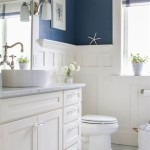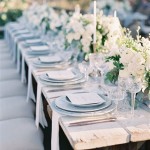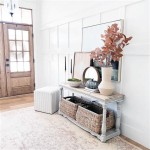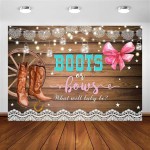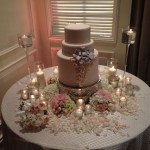Small Entryway Decor Ideas to Maximize Space and Style
The entryway, though often compact, is the crucial transition point between the exterior world and the personal sanctuary of a home. It sets the tone for visitors and provides a functional space for homeowners to prepare for departures and arrivals. In smaller homes or apartments, the entryway can often feel cramped and cluttered. However, strategic decor choices can transform this limited space into an inviting, organized, and stylish area. This article explores several small entryway decor ideas, focusing on optimizing space, enhancing functionality, and establishing a welcoming aesthetic.
Utilizing Vertical Space
One of the most effective strategies for decorating a small entryway is to exploit vertical space. This involves drawing the eye upward and utilizing wall space for storage and decorative elements. Shelving units, wall-mounted hooks, and tall, narrow furniture pieces are valuable tools in achieving this effect.
Wall-mounted shelves offer a versatile solution for storing items such as keys, mail, wallets, and decorative objects. Floating shelves, in particular, create a sense of openness and airiness, as they don’t occupy floor space. The shelves can be arranged in a staggered pattern or grouped together for a more visually appealing display. It’s crucial to consider the depth of the shelves and to avoid overcrowding them with too many items, as this can negate the sense of spaciousness.
Hooks are indispensable for hanging coats, scarves, hats, and bags. Instead of opting for a traditional coat rack that consumes floor space, consider installing a series of hooks directly on the wall. These can be simple, single hooks or more elaborate multi-hook racks. When selecting hooks, consider the overall style of the entryway and choose hooks that complement the existing decor. For instance, sleek, minimalist hooks work well in a contemporary setting, while ornate, vintage-inspired hooks suit a more traditional aesthetic. To maximize space, consider hooks that fold flat against the wall when not in use.
Tall, narrow furniture pieces, such as console tables or shelving units, can provide both storage and display space without overwhelming the entryway. A console table with drawers and shelves offers concealed storage for items like gloves, umbrellas, and cleaning supplies, while the tabletop can be used to display a lamp, a vase of flowers, or a decorative tray. When selecting a console table, ensure that it is proportionate to the size of the entryway and that it doesn’t obstruct the flow of traffic. A narrow depth is key to preventing the space from feeling cramped. Shelving units, particularly those with adjustable shelves, offer customizable storage solutions for shoes, books, or decorative items. Again, choosing a tall, narrow design will help to maximize vertical space without sacrificing valuable floor area.
Mirrors are also excellent for enhancing the perception of space. A strategically placed mirror can reflect light and create the illusion of a larger entryway. Consider hanging a large mirror on one wall or incorporating a smaller mirror into a gallery wall arrangement. The shape and style of the mirror should complement the overall aesthetic of the entryway. A round mirror can soften the lines of a rectangular space, while a rectangular mirror can visually elongate a narrow hallway.
Optimizing Functionality with Minimalist Decor
In a small entryway, functionality is paramount. Choosing decor items that serve multiple purposes is essential for maximizing the utility of the space. Minimalist decor, characterized by clean lines, simple forms, and a focus on essential elements, is particularly well-suited for small entryways.
A bench with built-in storage is an invaluable addition to a small entryway. It provides a comfortable place to sit while putting on or taking off shoes and offers concealed storage for shoes, bags, or other items. Look for benches with hinged seats or pull-out drawers to maximize the storage space. The bench should be sized appropriately for the entryway and should not obstruct the flow of traffic. Upholstered benches add a touch of comfort and style, while wooden benches offer a more rustic or minimalist aesthetic.
Rugs are an excellent way to define the entryway space and add a touch of warmth and personality. Choose a rug that is durable and easy to clean, as the entryway is a high-traffic area. Opt for a low-pile rug to avoid creating a tripping hazard. The size of the rug should be proportionate to the size of the entryway. A rug that is too large will overwhelm the space, while a rug that is too small will look insignificant. Consider the shape of the rug as well. A rectangular rug can elongate a narrow entryway, while a round rug can soften the lines of a more square space.
Lighting is crucial for creating a welcoming and functional entryway. In small entryways, it’s essential to maximize natural light whenever possible. If the entryway lacks natural light, consider adding artificial lighting to brighten the space. A ceiling fixture, such as a pendant light or a flush-mount light, can provide ambient lighting. A table lamp or a wall sconce can add task lighting for specific areas, such as a console table or a mirror. Choose light fixtures that complement the overall style of the entryway. Minimalist light fixtures with clean lines and simple forms are well-suited for small spaces. Avoid oversized or ornate light fixtures that can overwhelm the space.
A key organizer can help to keep keys organized and prevent them from getting lost. This can be a simple wall-mounted key rack or a more elaborate key box with a lock. Choose a key organizer that complements the overall style of the entryway. A small tray or dish on a console table can also be used to hold keys. This provides a convenient place to drop keys when entering the home and prevents them from cluttering the space.
Creating a Welcoming Aesthetic Through Color and Texture
Even in a small space, it is possible to establish a welcoming and inviting atmosphere through careful consideration of colors and textures. The color palette should be chosen to create a sense of spaciousness and light. Textures can add depth and interest to the space, preventing it from feeling flat or sterile.
Light and neutral colors, such as white, beige, gray, and pastel shades, are ideal for small entryways. These colors reflect light and create the illusion of a larger space. Avoid dark or saturated colors, as they can make the space feel smaller and more enclosed. If you prefer to use color, consider painting an accent wall in a lighter shade. This can add a pop of color without overwhelming the space. You can also incorporate color through accessories, such as rugs, cushions, or artwork.
Texture can be added to the entryway through a variety of materials, such as wood, metal, fabric, and natural fibers. A wooden console table adds warmth and texture to the space. A metal mirror frame adds a touch of industrial chic. A woven rug adds a tactile element. A cushion with a textured fabric adds comfort and visual interest. When incorporating texture, it’s important to maintain a balance. Too much texture can make the space feel cluttered, while too little texture can make it feel sterile. Aim for a mix of smooth and rough textures to create a visually appealing and inviting space.
Plants can add life and vibrancy to a small entryway. Choose plants that are low-maintenance and that can tolerate low light conditions. A small potted plant on a console table or a hanging plant near a window can add a touch of greenery. Artificial plants are also an option if you prefer not to care for live plants. When selecting plants, consider the size of the entryway. Avoid oversized plants that can overwhelm the space. Choose plants that are proportionate to the size of the space.
Artwork can add personality and style to a small entryway. Choose artwork that reflects your personal taste and that complements the overall style of the entryway. A gallery wall, featuring a collection of framed prints or photographs, can add visual interest to a blank wall. A single, large piece of artwork can create a focal point. When selecting artwork, consider the size of the entryway. Avoid oversized artwork that can overwhelm the space. Choose artwork that is proportionate to the size of the space.
Personalized touches, such as family photos, travel souvenirs, or handmade items, can make the entryway feel more welcoming and inviting. These items add character and reflect the personality of the homeowners. However, it’s important to avoid overcrowding the space with too many personal items. Choose a few key items that are meaningful and that complement the overall style of the entryway.

How To Decorate A Small Entryway Abby Organizes

25 Small Entryway Ideas That Make A Great First Impression

Entryway Decor Ideas For Small Spaces

Small Entryway Decorating Ideas

Track Your Order

Front Entryway Decorating Ideas For Every Season
:strip_icc()/houseofchaisentryway-1f93a794327a46e1a4ee8e719310f5ee.jpeg?strip=all)
25 Small Entryway Ideas That Make A Big First Impression

Small Foyer Design Ideas All You Need To Know

Small Entryway Makeover Featuring Gordmans A Beautiful Rawr

Small Entryway Ideas The Honeycomb Home

